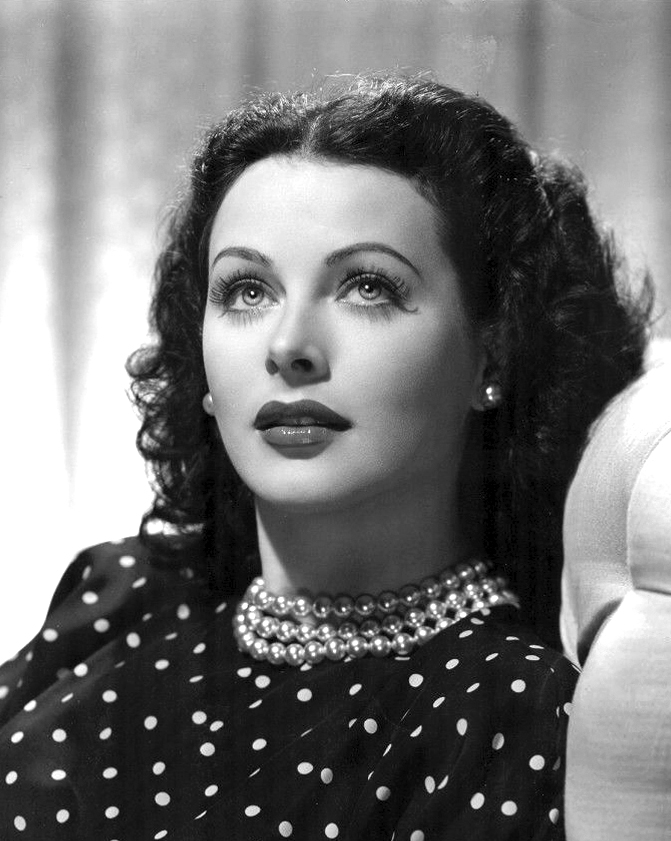The Story of a Feminist
From Sex Icon to the Inventor of Wi-Fi
Often, we come across stories of strong women who led incredibly eventful lives and were successful in multiple spheres of life. This article is slightly different from my previous ones (The Matilda Effect, Nettie Stevens) since it tells the story of one such woman who not only took the world by storm for her beauty and acting skills but also significantly contributed to modern-day technology.
Hedy Lamarr was a fierce woman and to say that her life was eventful is a seismic understatement. Personally, the more I read about her, the more drawn I was to her story. An incredible woman, who stood up for what she believed in throughout her life and was truly multi-faceted.

Hedy LamarrFotograaf onbekend, foto via Wikimedia Commons.
Born as Hedwig Kiesler in 1914 in Vienna, she was initially fascinated by theatre and took acting lessons. Naturally gifted, she landed a role in a play in no time and soon began to land multiple film offers as well. The film that would take the world by storm was her first one, a Czech film called Ecstasy where an 18-year-old Hedwig performed rather bold scenes. The movie was banned in multiple places by many, including Hitler. In the midst of that controversy, she would meet her first husband and get married. Hedwig’s husband was known to be a fascist and his parties were regularly attended by both Hitler and Mussolini. Later, she would describe him to be an extremely controlling man who had practically locked her up in her own home. She ultimately managed to escape to Paris first and then London in the most filmy manner.
Once in London, Hedwig managed to have a meeting with Louis Mayer, the head of MGM productions at the time. Eventually, she would land a contract with him in America but on one condition – she had to change her name to dissociate from her reputation. She now formally came to be known as Hedy Lamarr. As soon as she stepped into Hollywood, she was donned as the “most beautiful woman in the world”. Her features were so striking that it is said that Walt Disney’s Snow White was inspired on her looks. She would feature in many films until she finally started her own production house in 1945.
While all of this sounds like the possible life that most gifted and glamorous actresses could lead, there was much more to Hedy that the world didn’t get to see right away. She was a gifted inventor and she would retire to her room in between shots to work on her ideas. Completely self-taught, she was also heard saying, in an interview about her life:
Inventions are easy for me to do. I don’t have to work on ideas. They come naturally.
Fortunately, the aviation inventor Howard Hughes knew about her talent and would help her by providing her with materials for the inventions. Hedy disagreed with his airplane models, deeming them “too square”. After studying models of birds and their flight techniques, she helped Howard design airplanes that had more streamlined bodies and could fly much faster since the drag force had been reduced. He was blown away with her ideas and declared her a genius.

The Hughes airplanesLeft: before Hedy’s help, the Hughes H-1 (Hugher 1B) – USA, 1935. Right: after Hedy’s help, the Hughes XR-11/XF-11 – USA, 1946. Images from militaryfactory.com.
While this was impressive, Hedy’s scientific talents were really put to use during WWII. She became desperate to help the Allied forces when she heard the news of a passenger ship being torpedoed after being controlled by the Germans which subsequently killed around 80 children. In 1940, Hedy contacted her friend George Antheil who was a composer at the time as well as a renowned pianist across Europe. What did a composer have to do with torpedoes? Ideally, a launched torpedo should have communication with the ship or submarine that’s launching it. This is important because the torpedo might need to be redirected and its trajectory might change its course. However, radio communications could not be controlled at the time and this meant that the enemy, if they were smart, could intercept the radio signal and control the torpedo instead. Hedy and George wanted to help solve this problem.
Soon, the pair began working on a technology that is responsible for every wireless communication service today, including the Wi-Fi connection you’re probably using right now. They invented a “secret communication system” for the US Navy. The system that would use a version of frequency hopping.
‘Frequency hopping’ or ‘Frequency Hopping Spread Spectrum’ (FHSS) is a technique that wasn’t completely new at the time. Nikola Tesla described a similar system concept, a much more primitive version, in a 1903 patent. But although Hedy and George borrowed ideas from Tesla, they still produced an incredible system that was way ahead of its time. Simply stated, frequency hopping is a method of changing frequencies during the transmission of a signal so that it cannot be intercepted or understood by anyone else.
A system like that could prove to be very useful during the war and Hedy and George discussed how to control armed torpedoes over long distances without the Nazis noticing it. Previously, a torpedo would be launched and would be communicated with using a single frequency. This meant that between the transmitter at the launching site and the receiver on the torpedo, there was a single frequency in use.

Frequency hoppingImage from William Stallings “Data and Computer Communications”.
Now, if someone was smart enough or even if they were simply lucky, they could figure out this particular frequency and gain control over the torpedo. Instead, Hedy introduced the idea of creating a “code of frequencies” while communicating with the torpedo. So instead of only one frequency being used to communicate with the torpedo, there was a pattern of them instead. An interesting point to mention is that these synchronized frequencies were consistent with the 88 keys of a piano – a pianist was clearly involved in the design.
In image 4, for example, the “code” is 5-8-3-7-1-4-6-2 which means that the frequencies were used to transmit the signal in that order – f5 -f8 -f3 -f6 -f1 -f7 -f4 -f2. This pattern was only known by the transmitter and receiver, which made it much harder for anyone else to intercept it. And even if they did, they would only intercept a single frequency at any given time which would not be enough to control the torpedo. So essentially, the frequency “hopped” between values and this laid the foundation for radio communication.
Today, we live in a digital world, and the “code of frequencies” has been replaced with a “binary code” instead. Radio waves are coded as a series of 0s and 1s at the transmitter and debugged back to radio waves at the receiver. In fact, the Bluetooth on your phone can be considered to have the same technology as a torpedo-controlling system during WWII. The router you have at home or work is a device that acts as both a transmitter and a receiver. It connects to all your devices using radio waves and transfers data back and forth with them. Essentially, radio waves have replaced the usage of multiple cables everywhere. High-speed microprocessors have also become inexpensive and are hence used following Lamarr-Antheil’s ideas for most telecommunication devices.
While Hedy was indeed a brilliant mind, she did not sufficiently realize that she deserved credit for her ideas. Hedy and George did have the foresight of patenting their wartime invention but the patent term lapsed without either of them realizing it. Today, their invention is used far and wide but they didn’t make any money from it – neither before nor after their death. However, three years before Hedy passed away in 1997, the Electronic Frontier Foundation acknowledged the work as an important development in wireless communications.
To conclude, it’s fair to say that Hedy, along with her colleague George laid the foundation for modern-day wireless communication. Everything we use today is based off her idea, in one form or another, and she deserves to be applauded for it. Hedy lived a long and eventful life, making the most out of every opportunity and proving to the world that beauty and brains can mix together. In a way, she’s the epitome of what every modern-day feminist hopes to achieve – and she did it all almost a century ago.